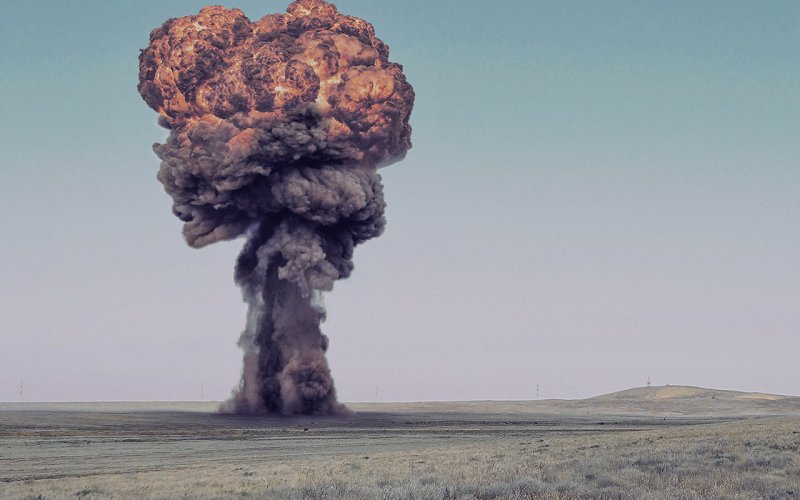An explosion (e.g. a nuclear bomb) creates a pressure wave, i.e. air spreads outwards from the epicenter. Does this mean that a vacuum is created at the site after the explosion?
Yes, that’s right. A pressure wave is typically created by an explosion (it doesn’t matter what the source is) compressing the surrounding air. Because air is a flexible environment, this compression will spread further. You can try something similar yourself — just push water in a pool (or in a bath or pond) with your palm. We will see that this compression begins to spread further through the water. Unlike our hand, the energy of an explosion is much higher and therefore occurs with stronger air compression. This compression spreads further and the energy that has been put into it can have destructive effects. At this point, we should point out that nothing like this would happen in a vacuum (e.g. in space) — the energy of the explosion would still spread so explosions in sci-fi movies are not always realistic.
In the example shown, if we push the palm forward in a pool, we will see the surrounding water flowing behind the palm. It will be the same during an explosion — the explosion pushes the surrounding air and therefore there is a vacuum at the place of the explosion. The air will return to this place due to atmospheric pressure so that the pressure is the same everywhere. So the air first opens and then contracts again. During this compression, the pressure may increase (air flows sharply back) and condensation may occur (fog). These pressure changes at the site of the explosion will be repeated several times before reaching an equilibrium state where the pressure is the same as before the explosion. It’s the same as in a pool — it will take a while for the surface to calm down. And these pressure changes spread to us like sound — that’s what makes the sound of an explosion.
Want to ask something?
Send us an e-mail with the subject “Physics mysteries” to the address:
We can't wait to tackle your interesting questions!





